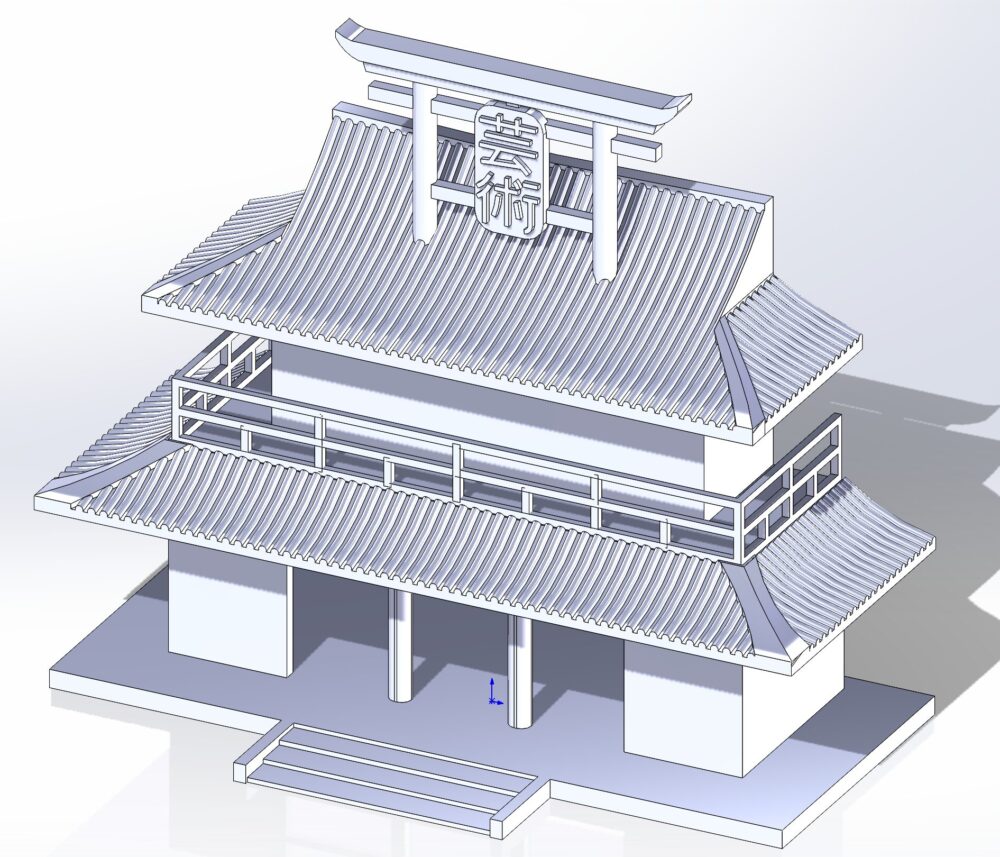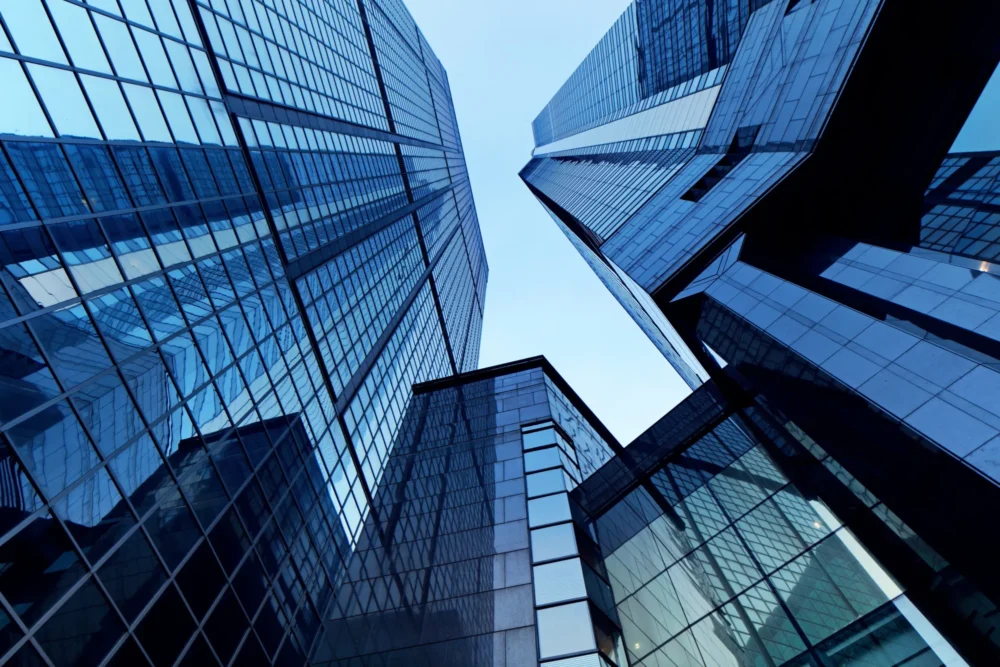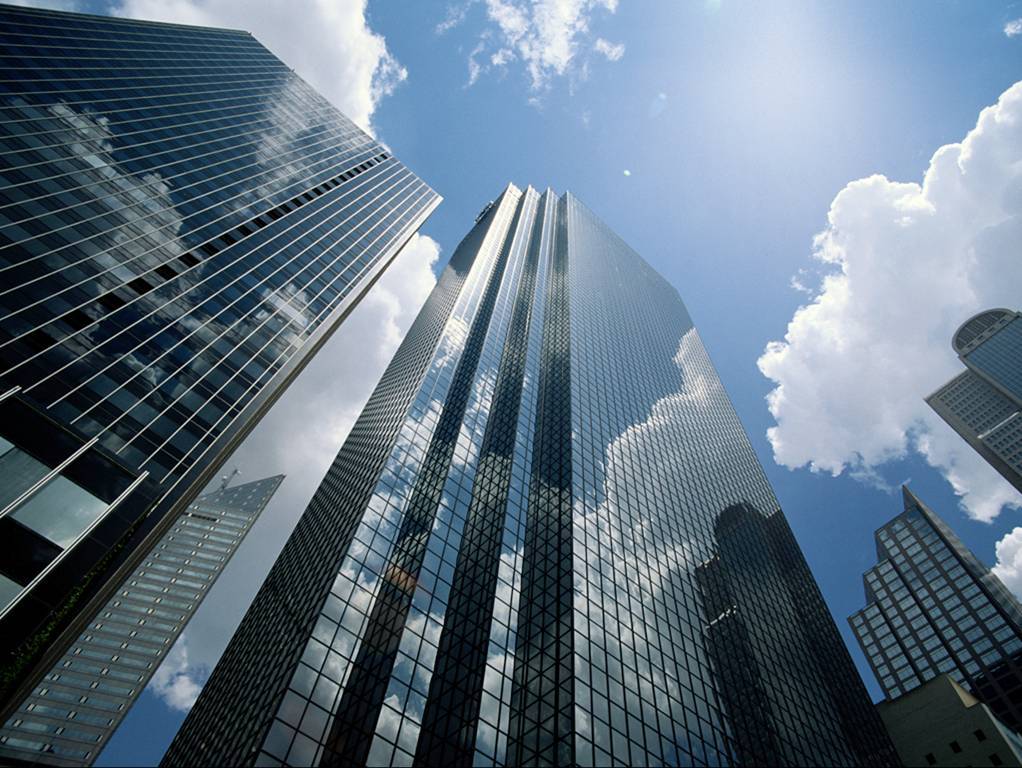As a refresher, I am making a 3D printed piece of a building inspired by many classic Japanese architectural trends. My CAD progress on this can be seen below for reference.

It mainly follows the structure of Japanese buildings that I identified in previous posts, while adding a flare like the Torii inspired gate with text on the roof. Deciding what the “opposite” aesthetic of this seems like a complex task, that could invoke many cultural comparisons and nuances. For me, I think what makes what I’m building so unique is that it isn’t like much modern architecture, at least here in the US. There is a large focus placed on style, and form, with large, sweeping entrances and roofs. Obviously, given their age, there is a lack of windows, with a focus on allowing people to walk on the balcony on upper floors. Because of all these factors, I think a reasonable opposite aesthetic while remaining in the architectural world are large commercial buildings or skyscrapers, or even large apartment complexes. An example of what I’m thinking of is shown below in the photo by Leung Chopan (1).

This photo encapsulates multiple bulidings, all of which are basically completely encased in glass, a material not seen in classic Japanese architecture, they have simple footprints and angular designs, often being just large rectangular prisms. They have no wasted space, where the functional interior of the building extends up to the very edge of the building, they are very much function over form. The featured image (2) shows a very similar set of buildings. Below, in another photo by Trent Nelson (3), you can see an apartment building in Salt Lake City.

It also has basically zero flair in my opinion, with very rigid angular designs, space and form over function. Without knowing, you could think this was the same type of building as the skyscrapers/commercial buildings. Obviously, the piece I’m creating is based on architecture not used for housing or commerce, it’s more of a very fancy and elaborate gate, meant to illicit wonder based on its design, something the buildings I’ve discussed do not do much of, at least in their aesthetic. The engineering involved in all of these do illicit wonder.
(1) Leung Chopan, 2013, Office buildings — Stock Photo © leungchopan #25028435
(2) Vincent Loy, 2010, Origin of the word ‘skyscraper’ | Vincent Loy’s Online Journal
(3) Trent Nelson, 2020, David Ross Scheer: Why do all the new apartment buildings look the same (and do they have to)?


2 Comments. Leave new
Hi Keith, I agree that a lot of modern architecture is honestly pretty boring. Whether the buildings are made of concrete or glass, they’re all usually very rigid and bland (like the Engineering Building!).
Do you know how traditional Japanese architecture compares to modern Japanese architecture? As buildings get larger, it may be more practical and cost effective to have a less intricate design, but is the flair of traditional Japanese architecture still incorporated at all today?
I completely agree with you on modern architecture being opposite of your current aesthetic. Modern Architecture typically focuses on a function rather than cultural relations. The only consideration would be that modern architecture encompasses so many different aesthetics, which makes me wonder, what aesthetic or branch of modern architecture could be considered the opposite?
In my opinion, it would be the International Style, focused around the idea that “the house is a machine for living in” – Le Corbusier. It completely opposes the foundation of traditional Japanese Architecture which values cultural meaning and the concept that it is okay for “excess,” which is the complete opposite of the international style.
I wonder what a direct comparison between Classical Japanese Architecture and the International Style would lead to. Could they be fused in some way? Or are the fundamental values too different?